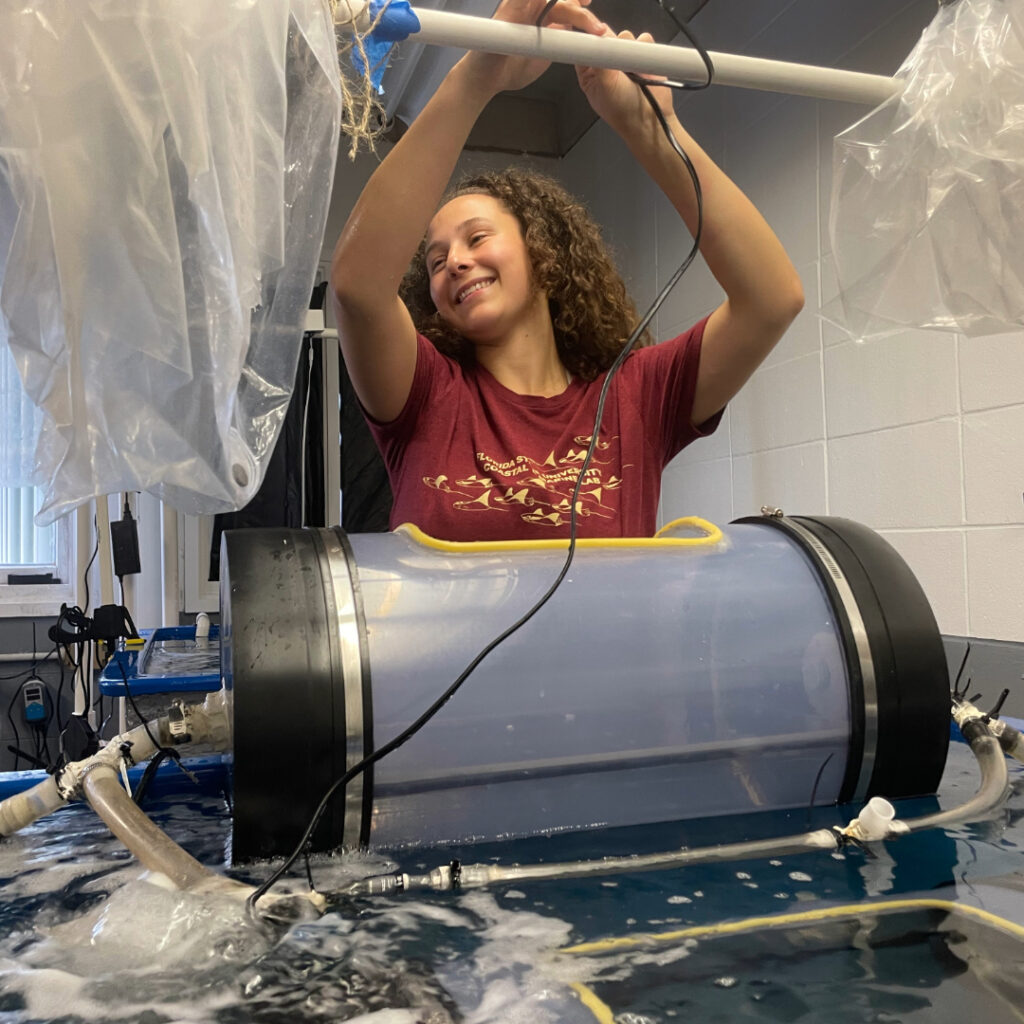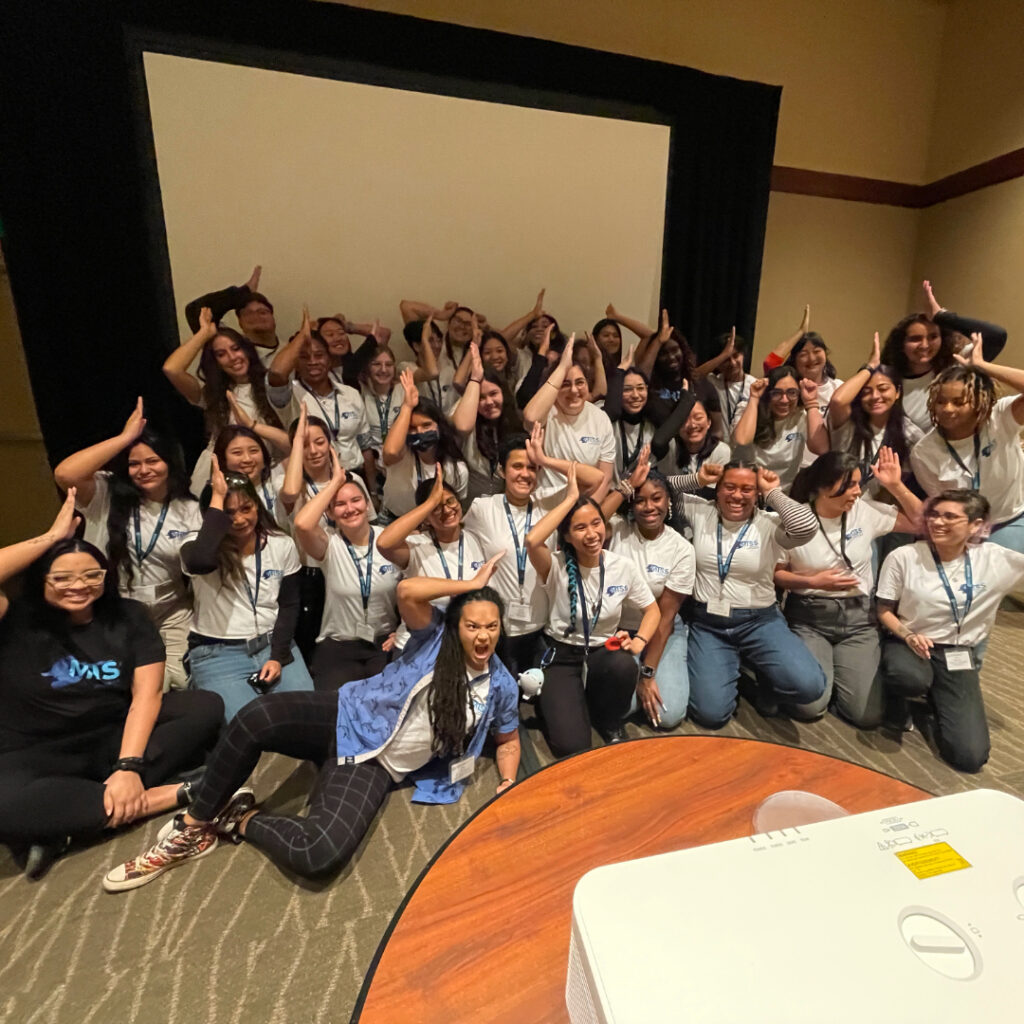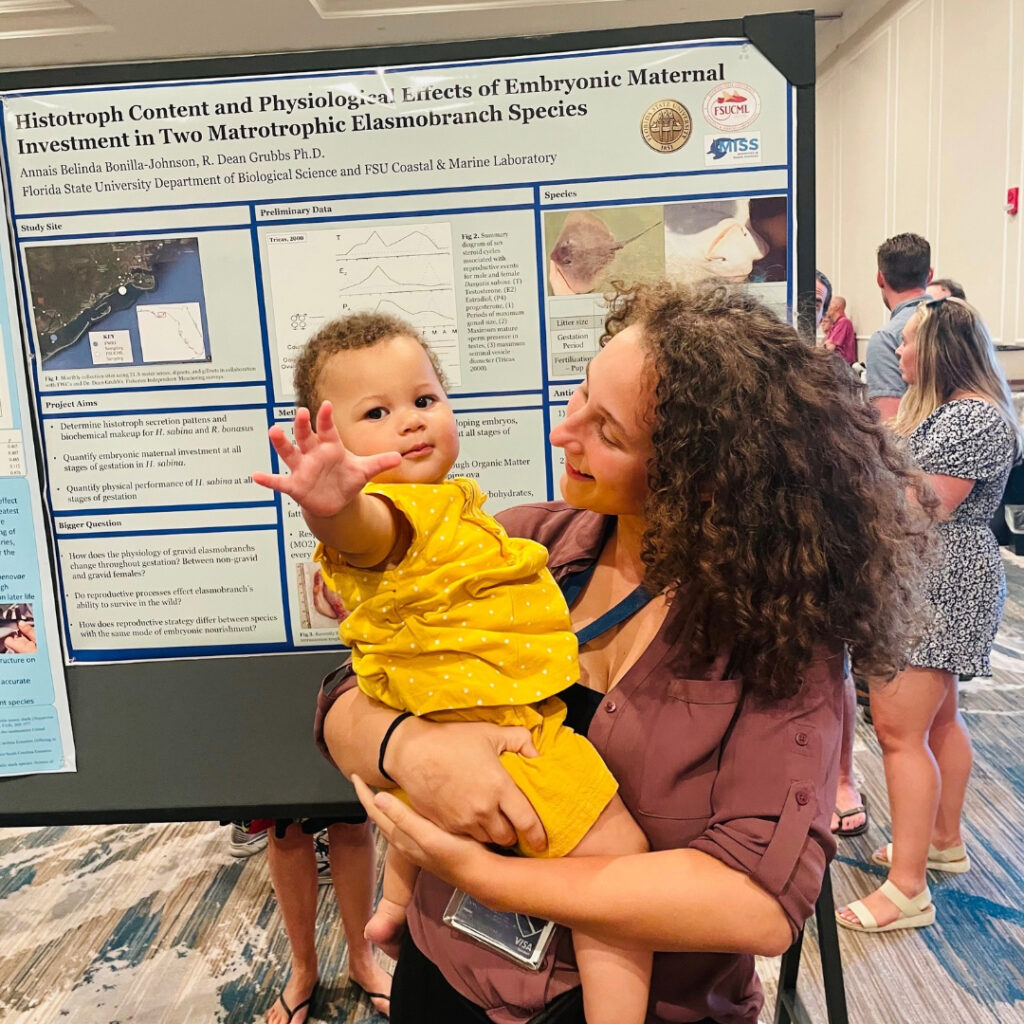Annais Muschett-Bonilla is a Ph.D. candidate in the Biological Sciences: Ecology and Evolution Department at Florida State University. Annais was awarded a Guy Harvey Fellowship in 2024.

Annais Muschett-Bonilla setting up respirometry chambers to measure oxygen consumption of pregnant Atlantic stingrays three months into their four to four-and-a-half-month gestational period at Florida State University Coastal and Marine Laboratory. Photo by Annais Muschett-Bonilla.
Spending hours in the lab, and aboard research vessels, a common question I receive is what motivated me to become a marine biologist. In the past, I always ascribed it to living on a sailboat at one point in my life during financial hardship. After giving it some more thought, I’ve realized that several moments have equally and cumulatively contributed to my curiosity for marine biology and commitment to the career.
One could say my road to researching the effects of reproductive energetic demands on the performance of pregnant elasmobranchs started in childhood. My motivation for marine biology initially stemmed from my father’s modeled hard work, and his belief in me and my desire to connect and protect rich cultures that surround the ocean. Growing up in Houston, my father would return from work at 1 or 2 a.m., and he’d occasionally pack my brother and I into his truck with a fishing pole, driving an hour to Galveston.
My grandmother would tell stories of her teenage years in the Hawaiian Islands. My grandfather teased her, always calling her Miss Hawaii, the most beautiful woman on the island. As a gullible kid, I grew up telling classmates my grandmother was Miss Hawaii but as I became older and failed to find her name on the list of participants, I realized my grandfathers’ comments were flattery, not fact. He was right about her beauty though. As she houla’d around the room and described the blue ocean, I was mesmerized. Not only did I want to experience these beautiful oceans for myself, but I also desired to protect and preserve the oceans that fostered my grandmother’s livelihood and culture.

Annais pictured with the Minorities in Shark Sciences (MISS) Program.
While I have been fortunate enough to have a culmination of these experiences that drew me toward this career, not all have the privilege to be exposed to marine environments or any ecosystems for that matter. My access to a decent education and several mentors who expanded my knowledge and guided me toward my desired career path got me closer to my dream.
I first learned what a research lab could look like as an undergraduate researcher in the Rosenthal Lab at Texas A&M University. Dr. Gil Rosenthal integrated graduate students and collaborators from Mexico, Italy, Japan, South America, and the U.S. to research sexual selection and speciation.
Dr. Rosenthal was proud of his and his students’ heritage, switching from English to Spanish to Italian in individual and group settings. He openly addressed the racial disparities in science and society, and it was his lab where I fell in love with how the blending of cultures, languages, and backgrounds could facilitate better science and a better world. It was admirable and taught me that I did not have to conform to my heritage to be a good researcher but embrace it.
For many, marine biology is not a realistic career choice. I joined Minorities in Shark Sciences (MISS) four years ago to provide opportunities, mentorship, and exposure to those without access. MISS aims to make marine biology and environmental careers a tangible livelihood for anyone and has a network of early to late-career scientists who identify as gender and racial minorities with Friends of MISS to support the mission. MISS’s mentorship, opportunities, exposure, encouragement, education, and safe community are a large reason I have progressed to becoming a doctoral candidate at Florida State University today.

Annais with her child, presented a poster on the effects of reproductive energetic demands on the performance of pregnant elasmobranchs.
As a mother of an almost two-year-old, I am familiar with the sacrifices mothers make in the best interest of their children. My current research in Dr. Dean Grubb’s elasmobranch lab investigates the physiological mechanisms that occur during pregnancy in sharks, skates, rays, and sawfish. Understanding the energetic demands of pregnancy in these species is crucial to facilitate their conservation and preservation. While elasmobranchs participate in up to ten modes of reproduction, my dissertation focuses on mothers who provide nourishment to their pups through intrauterine secretions, called histotrophs. This is suspected to be costly to the mother and my work aims to understand the possible risk to maternal survival that a mother bears to ensure her pup’s survival and health.
Receiving the Guy Harvey Fellowship has been integral to this research allowing for the purchase of an ultrasound that is used to determine the stage of pregnancy in pregnant Atlantic stingrays. The ultrasound, knowledge, and experience I gain from carrying out this research will help prepare me for a long career in academia continuing the study of reproductive physiology and funky forms of parental care in sharks and fish. I hope this area will expand our knowledge and ability to preserve these animals and allow for collaborative research and opportunities around the world.
As a minority, single mother, and student who grew up economically disadvantaged in a single-parent household, I hope to serve as a role model to anyone who has been led to believe they do not belong. Marine science, STEM, education, and academia, are fields for all. Becoming a Guy Harvey Fellow has posed a major opportunity to advance my research and ability to further my career. With every opportunity that I receive, I hope to create more opportunities that diverge the socioeconomic, cultural, and racial disparities and facilitate greater accessibility in this field and STEM. The Guy Harvey Foundation shares in its mission to create marine science educational opportunities worldwide.
Want to learn what the rest of the Guy Harvey Fellows are up to? Check out these student-written blogs to read about their respective backgrounds and research: https://www.flseagrant.org/tag/ghf-blog/